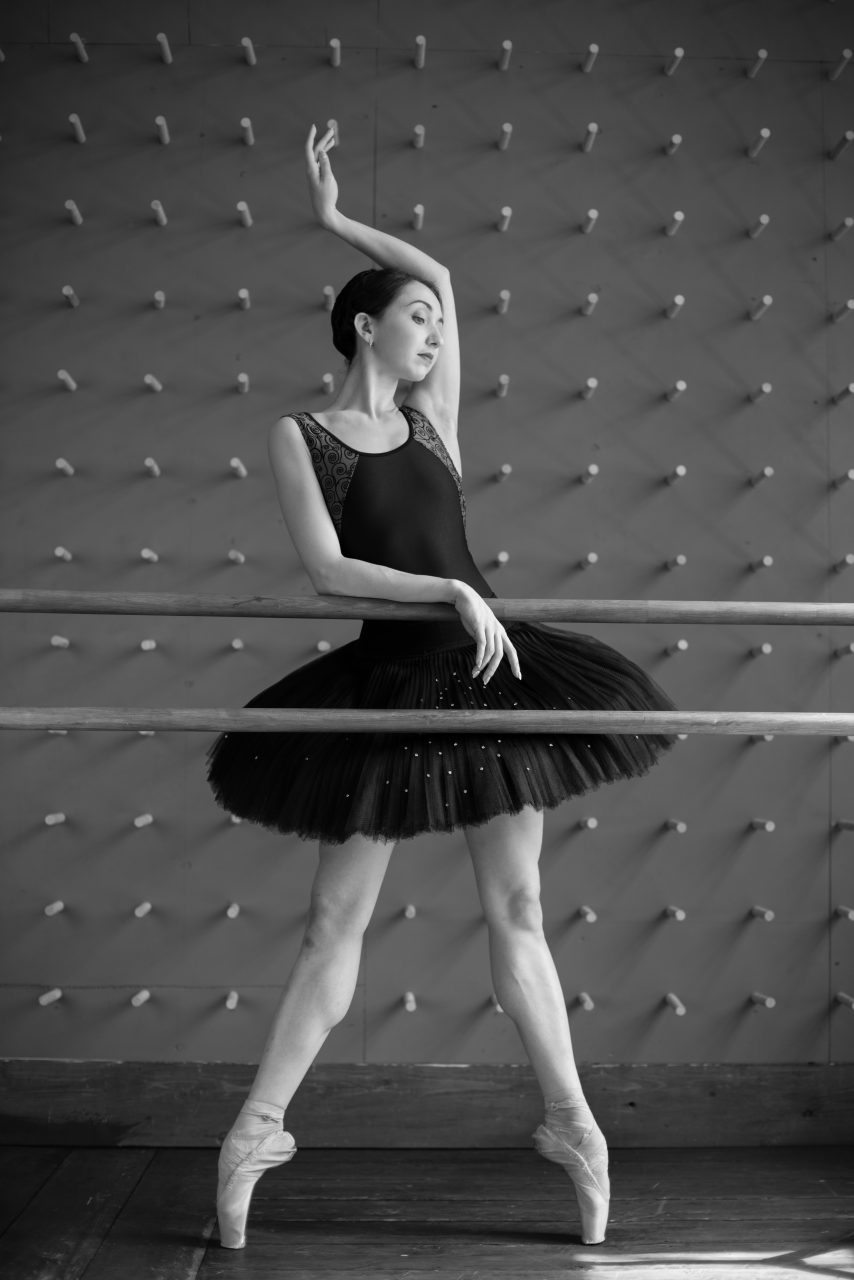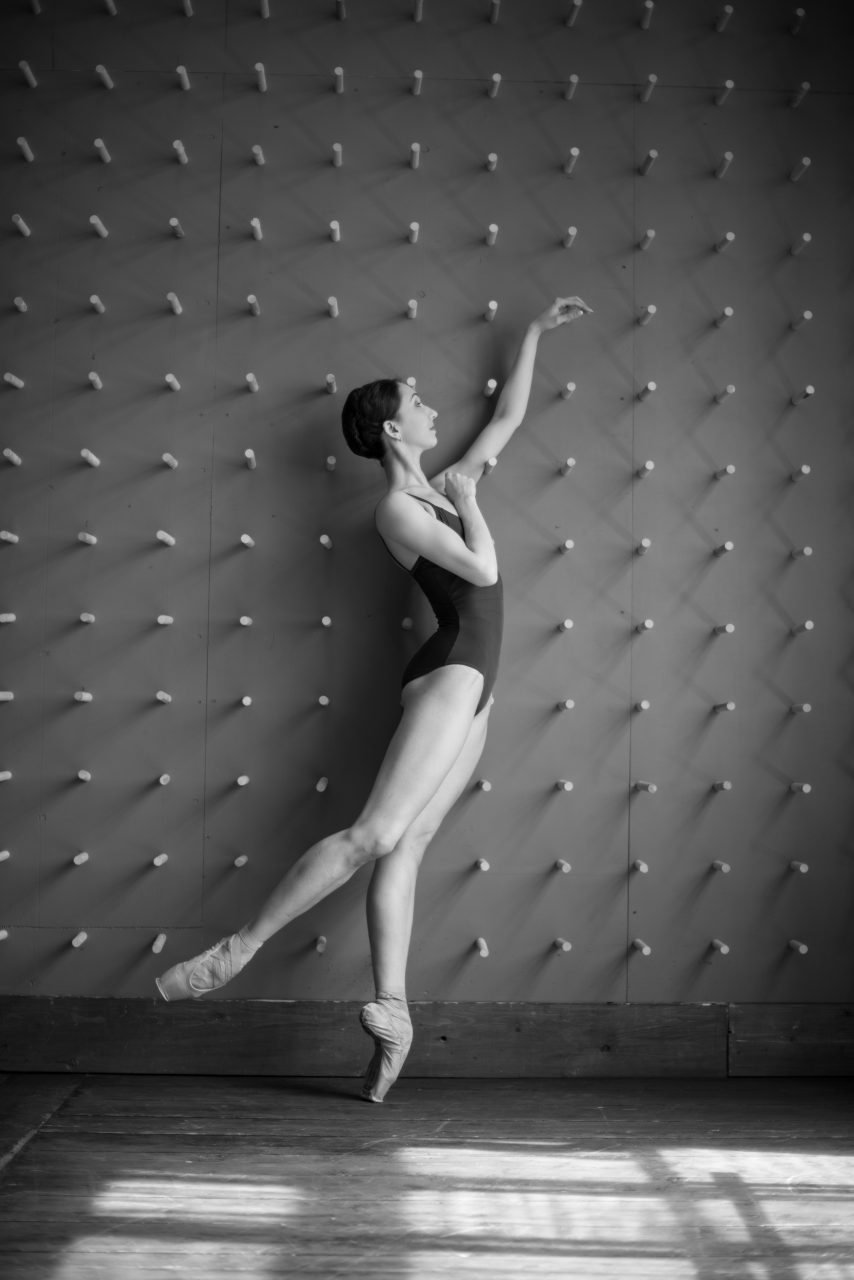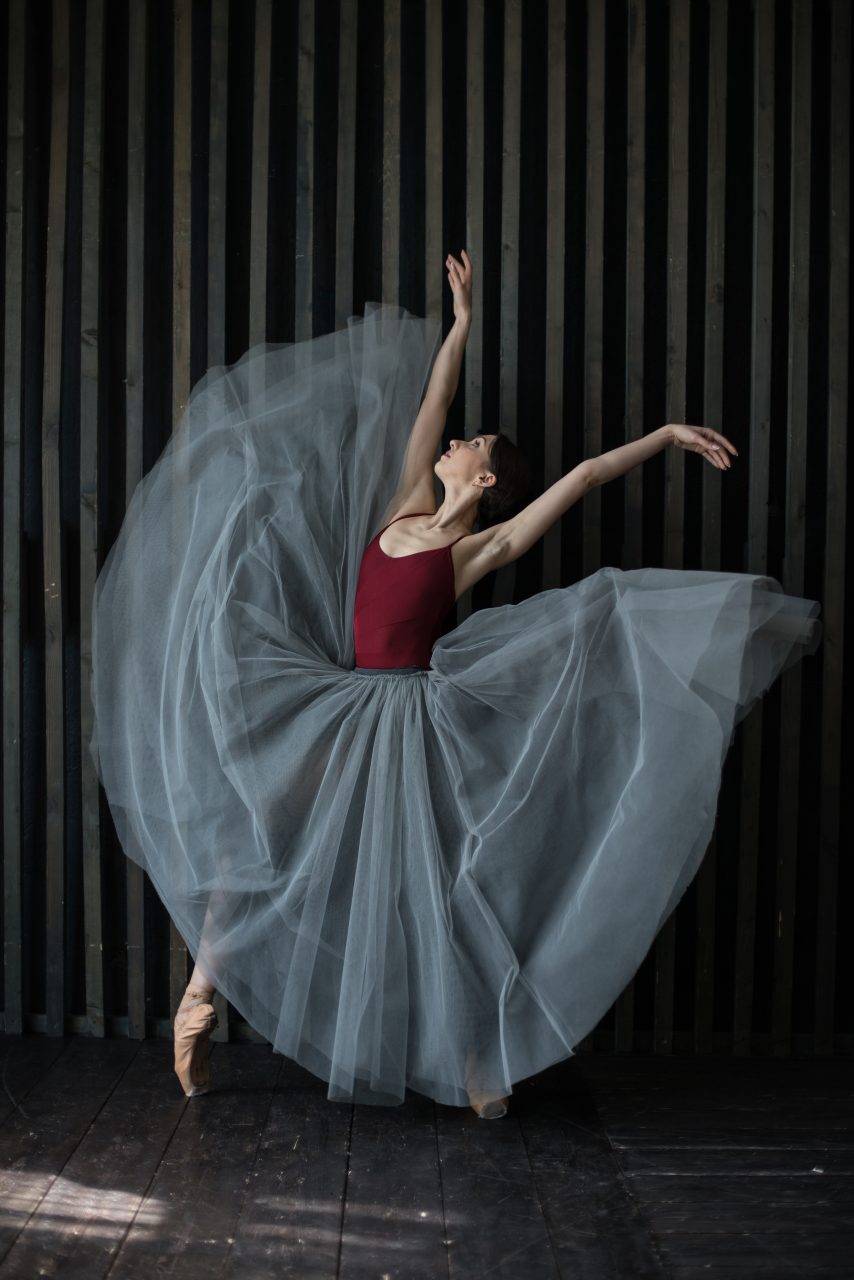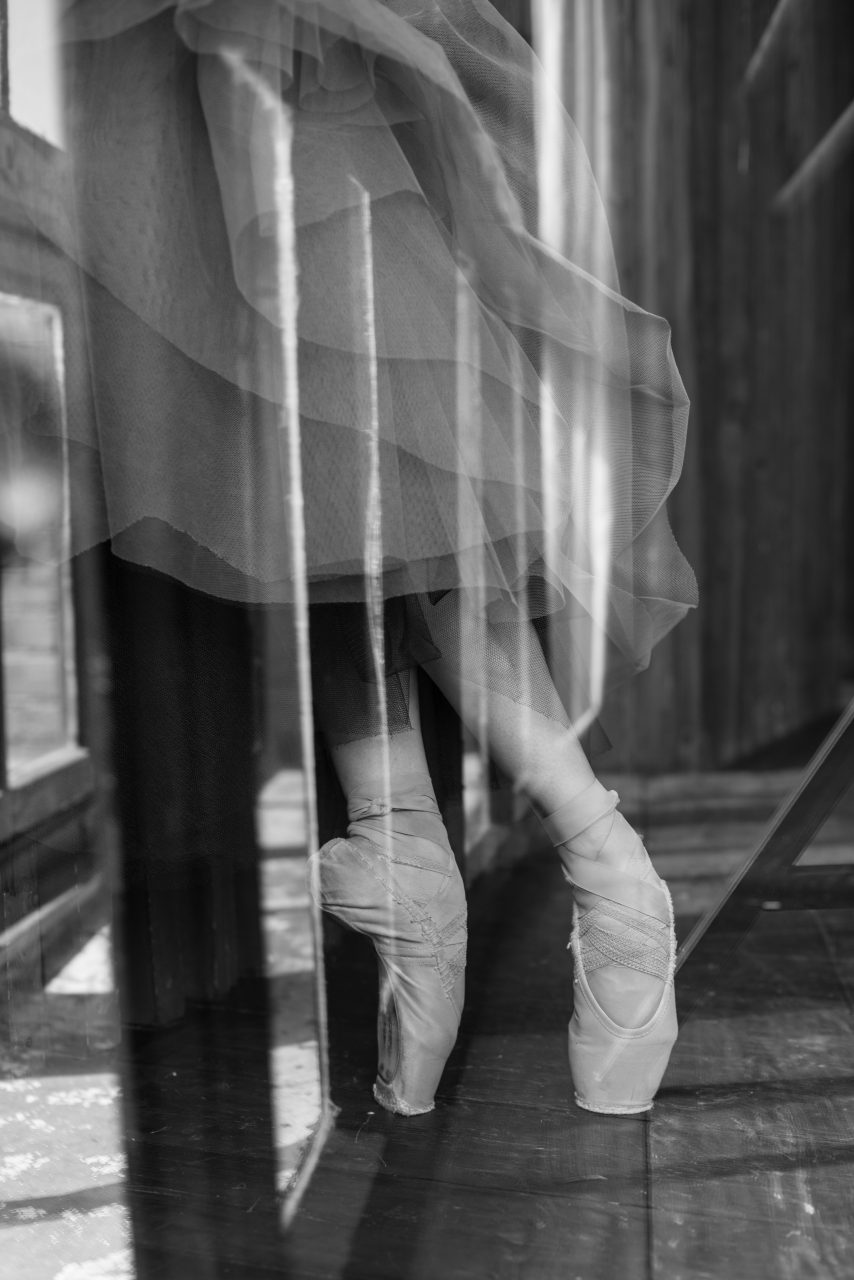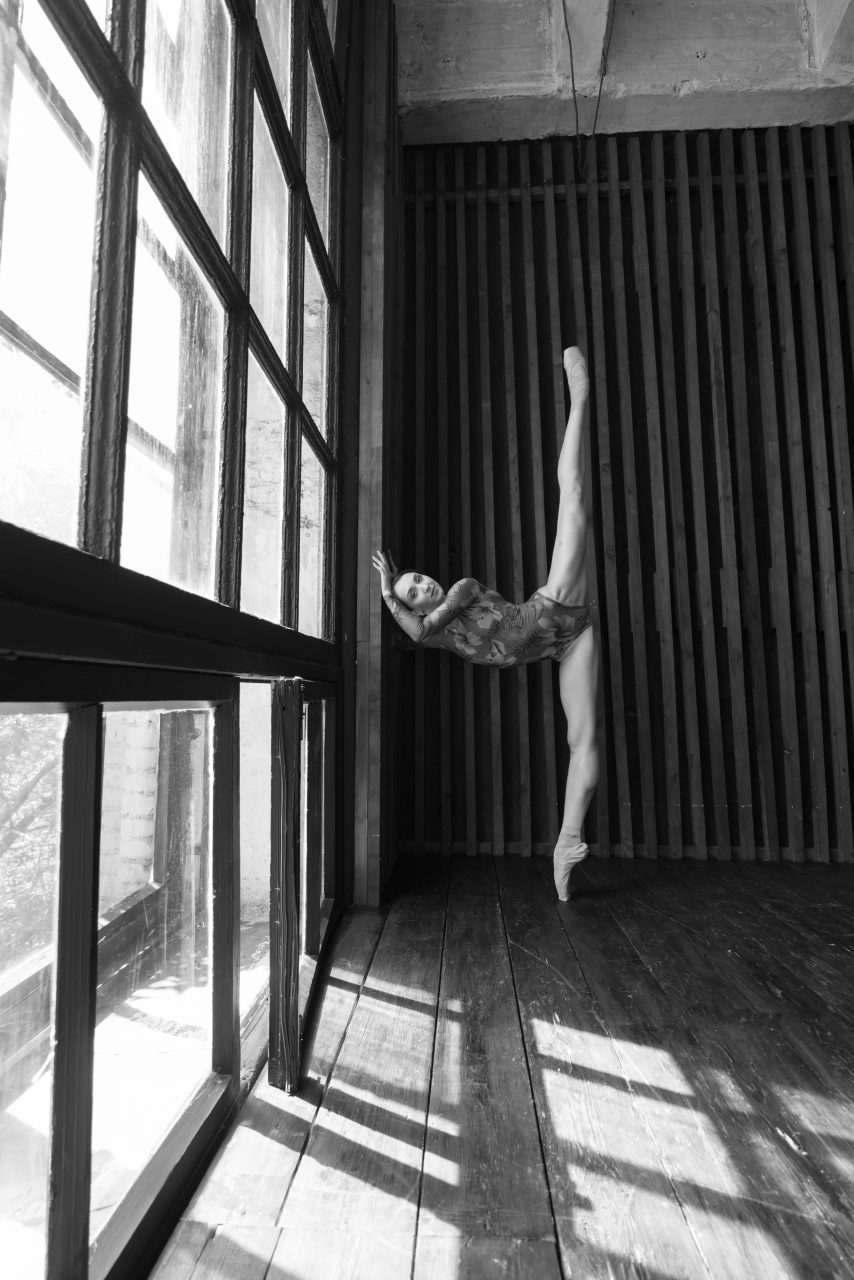Stanislavsky Music Theatre finished the season with a loud premiere of three ballets. You danced solo in the Suite in White, how did this went premiere for you?
In Suite, beside adagio and variations, I also rehearsed for the Flute part, but I will dance it in the next season. These variations are very different, somewhere rather tricky. Laurent tried to clean it all up, he is quite an open person, he says it as it is. Working with Laurent is interesting because, in addition to being an art director, he is also an attentive teacher, he sees your mistakes and tries to correct it right away. He understands that everyone has his own talents, and tries to incorporate them into the production to make the best performance possible. This applied to every ballerina and every actor in the corps de ballet. This attitude helps: he’s open to us, and we can feel it. Even the orchestra often notes that we have become different, we started to smile often. This is because we are not kept in a rigid framework, whatever issue arises, it can be negotiated and resolved.
Laurent Iler is a bright representative of the French style. Does he contribute this style to the performance of artists?
I remember working with Pierre Lacotte, Gillen Tesmar, Claude Bessie, they told me that classic is a classic, it always remains within its canons, but there are different accents. It seems to me that for the French have feet, deliberately shown feet. Arabesques, pirouettes, hands – we have it in the Russian school.
In the Cigarette, we have a barely noticeable move, when the ballerina stretches the movement, and then abruptly transitions. This transition from smooth to static looks more like a European style…
Yes, there is. As in mazurka in the Swan Lake, I do not think this is a torn movement. “It’s your personality, do it the way you feel,” Laurent told me. There was no task to do it in a certain way.
You had a trauma that you took a long time recovered from. Today you are in great shape. Tell us what metamorphosis happened to you, after all, it was a fairly long period of a difficult recovery.
For a long time, I was scared of the surgery, although it was initially clear that it was inevitable. All the doctors said that if the same trauma happens the second time, it will entail an operation. Half a year before the injury, my knee did not function well, but I tried to pump muscles because many athletes and dancers do it. In ballet, we can not exclude certain elements to make it easier the knee. Yes, we can minimize the load by shifting the weight to the other leg, but this is also wrong, and I decided to have the surgery. It was complicated since in addition I had torn menisci.
How long did it take you to recover?
Six months I did not do anything, then I started an easy rehabilitation. I was helped by rehabilitologist Maria Burova: she made the individual program for me, picked up the exercises, and for seven months I visited her twice a week, and the rest of the days I did it on my own. The knee behaved unpredictably: one week all could be well, and the next week it could suddenly start to swell. There were moments when I was in despair, it seemed to me that it was impossible to recover. I realized that I had to either pass this trial or quit completely and look for something else to dedicate my life to.
You had such a rich creative life, how is it to suddenly become detached from all this, from the theater?
A year before the injury, I was tested in the Het Nationale Ballet, I was invited to a leading ballerina position with a good contract. I blamed myself for not having accepted, I was kept by Igor Zelensky, offered the best conditions here, and I chased after the performances. This led to the fact that a continuous number of performances drove me to a standstill. During the injury, I also feared that I could not recover at all, that I could not return to my previous level. But I could not despair, I realized that I have to fight it, especially when difficult moments occur. You can overcome any trauma if you have a desire to do so. The second thing that I realized for myself is that you need rest from time to time and be able to listen to your body.
You are a prima, did you not have a chance to go on stage in some small role?
I was offered to dance in White Adagio, but I want to say that when you dance a full-fledged ballet, everything gradually goes on, one by one, you enter the rhythm of the performance. In Suite, for example, as in the contest: it is necessary to go out only for one variation because it is difficult.
Let’s talk about the contests. It seems that you don’t really have a good history with them. Why is that?
I think it’s just a matter of chance and luck.
Entering to the theater, every artist has his own way of development. How did you manage to rise on top?
I have been at the theater for 10 years, I have passed all the steps and I am grateful to each of the art directors. I think everyone should go from the corps de ballet to the prima because then you understand how valuable the corps de ballet is, the quartets, the duets, the variations. I had a period when I danced for a long time in the Don Quixote plug-in variation and understood how much it helps me, educates me. And if you come and immediately dance the leading part, you do not know the whole performance. My chance was Sylphide. There was a casting, and Pierre Lacotte saw me with Oleg Rogachev in this part.
Somehow it happened that Zhenya Obraztsova danced the first performance, Natasha could not dance during the second, and it was given to us. And then Zhenya went to the Bolshoi Theater, and for a while, I was the only one who danced this ballet in the entire theater, and two years later I was nominated for the Golden Mask in this role.
When Igor Zelensky came, you formed a star duet with Sergei Polunin.
Yes, it was a push for my career.
What was it like to dance with him?
I liked working with him. According to the life of Sergei is the owl: he sleeps half the day and works in the evening. Some people say that he dances without rehearsals, it’s not true. May be we do not see it, but he rehearses. He can come to the theater at 7 pm or 8 pm and be in the hall until the midnight. He is comfortable this way. When we were together rehearsing for Don Quixote, I liked him as a dancer. We talked a lot, watched Baryshnikov, searched for our nuances. It was an interesting job for us.
Sergei more than anyone else danced with you. Why?
Initially, Sergei needed a partner for Don Quixote, but after that, there was a Swan Lake and so on. When we went out together, it seemed to me that against the background of Sergei I was some kind of decorative element, but he showed me with his playing that with his virtuosity and technique there is also a ballerina.
This season you danced two big roles – Giselle, Nikiya…
Giselle was my most cherished dream, but when you wait a long time, often the expectations are not justified. This can be said for me in this role. I opened up in more in the role of Nikia.
What is your attitude towards criticism?
I treat the newspaper criticism with understanding that everyone has an opinion and everyone can express it. Critic forums, it seems to me, has nothing to do with the opinion of professionals, sorry if I offend anyone. Such people do not have the right to point out the person’s shortcomings, they can not fully understand what kind of work this is and what ballet dancers go through on the daily basis.
Professionals will not allow themselves to insult a person. Therefore, to television, newspaper criticism, I’m calm, but I do not like forums, and it’s not just me, by the way.
A little bit about your teacher, Tatyana Chernobrovkina, who in the past was Stanislavsky’s prima. People say that she passes you her techniques “from feet to feet”
With Tatyana Chernobrovkina and Dmitry Zababurin, we started working at the moment when I was rehearsing for the contest. Tatyana and I immediately had some kind of connection. Of course, it was a difficult period. You understand, when you work hard, you dance, you play shows, you start to delve yourself, to look at records, and you do not like something. You begin to blame the teacher for this. We went through this with her a lot during these seven years, and I understand that sometimes I got irritated. I danced Sylphide, not for the first year, but realized that I was missing something, and expressed it all with pretensions. I had such a period, and it’s over now. Probably this is why ballerinas change the teachers. I also had the thoughts of leaving and working myself, but I was stopped by the understanding that the problem was in me. Tatyana Anatolyevna saw it all, sometimes she was silent, and I am very grateful to her for the fact that she was able to endure it, to understand me and put me to the level of which I am now.
Some people can not overcome this, they leave for others, but your teacher who leads you from the very beginning, he will forever remain yours, he knows all your shortcomings from start and to finish. You can put a crown on yourself and think that you are a star, but it’s better to take it off, put it in a dark box, but keep growing.
Blitz:
First appearance on stage
Plug-in variation in Don Quixote
I do not like
Anger
In my playlist
Different types of music
I’ve never tried
Skydiving
I always have these three things with me
Phone, Bag, and Brains
Favorite city
Saratov
I’m proud of
My parents
A bright moment from childhood
How I fell and broke my knee
I am reading
Romance novels
Perfect day
Tuesday
Idol
Maya Plisetskaya
I can not live without
Without my beloved husband
Dream
To make dreams come true
Secret of success
Be yourself
Relationship with social networks
Normal
Attitude to criticism
Normal
The incident on stage
I fell down at the premiere of La Bayadere
The most difficult part
Kitri
The ability that I would like to have
To fly
Tea or coffee
Tea
Character
Spitfire
The Secret of Happiness
In love
Photographer Darian Volkova



